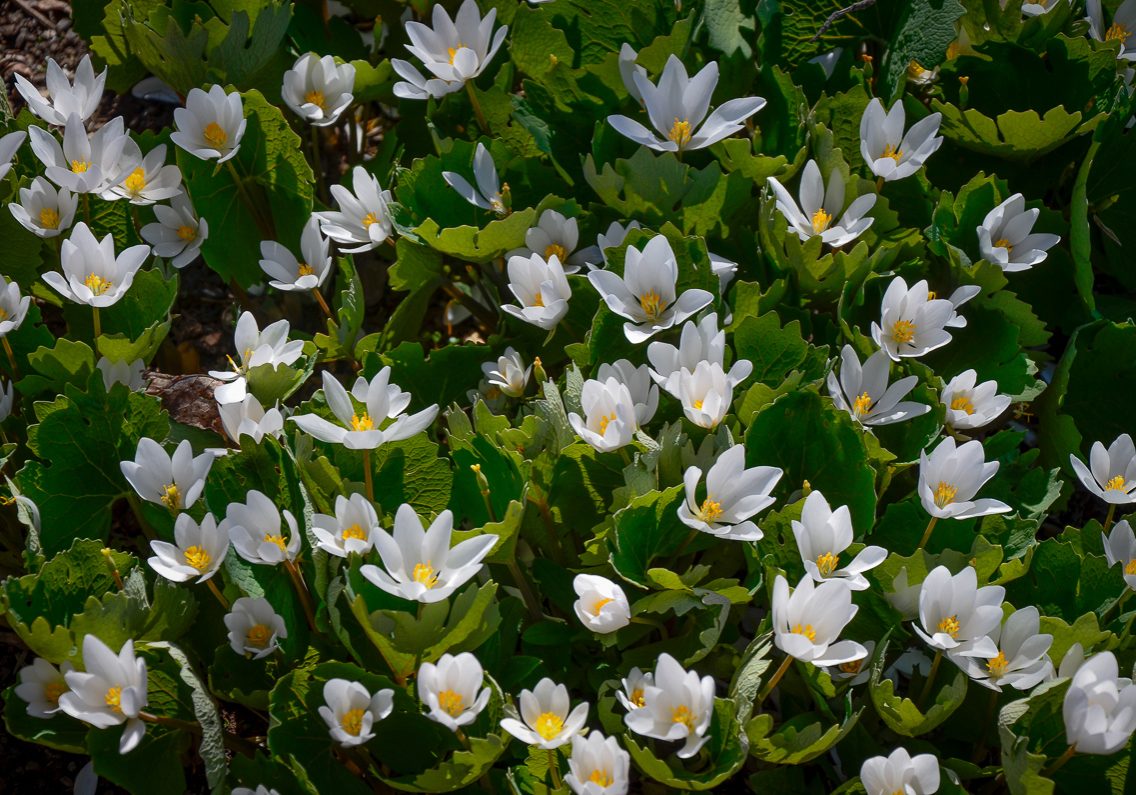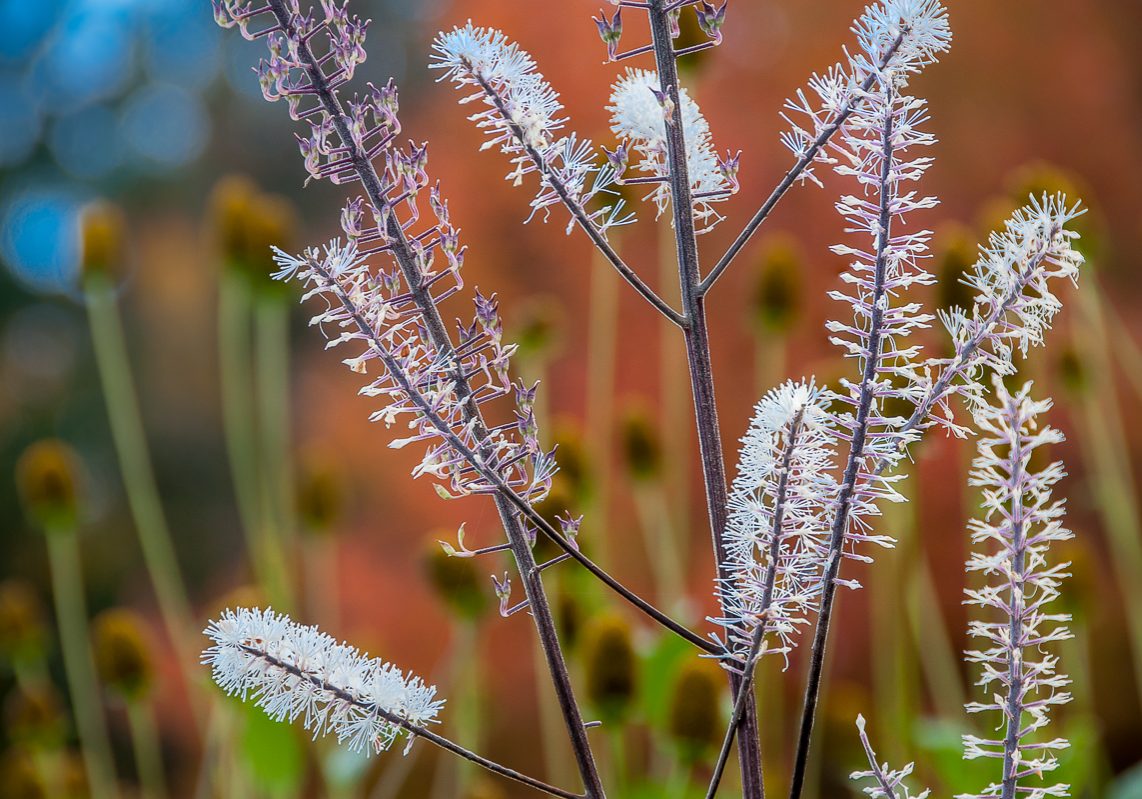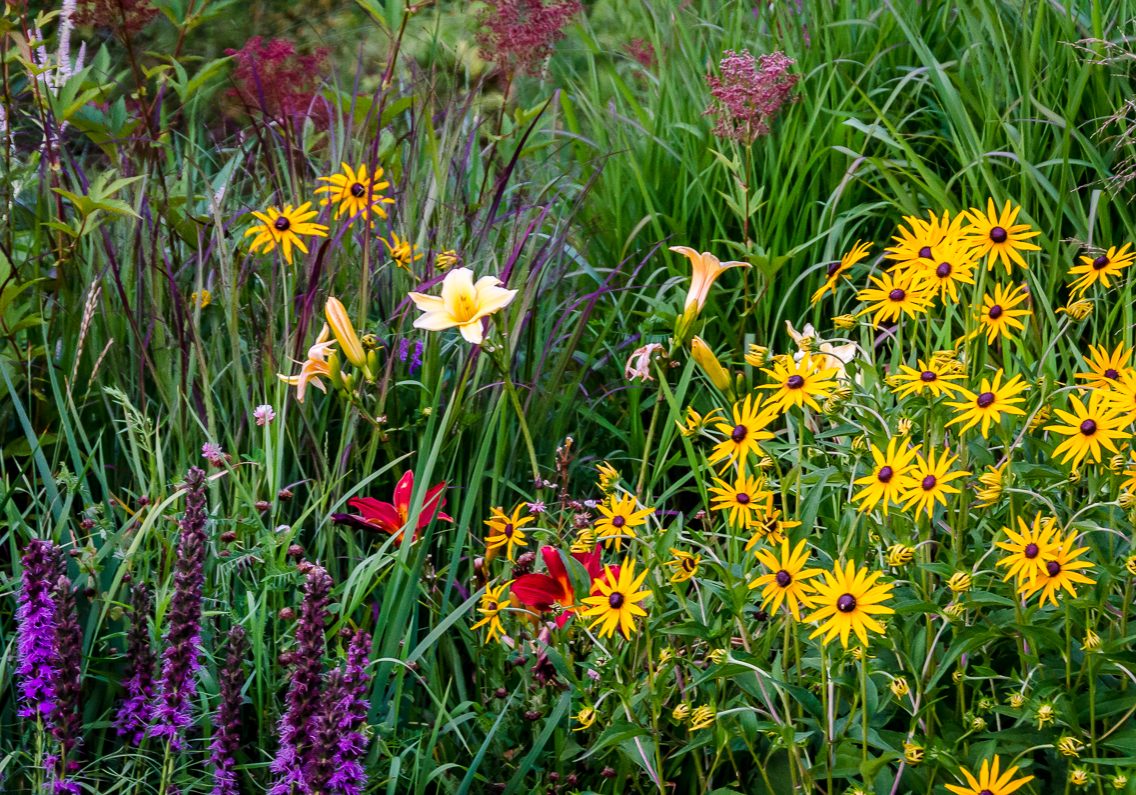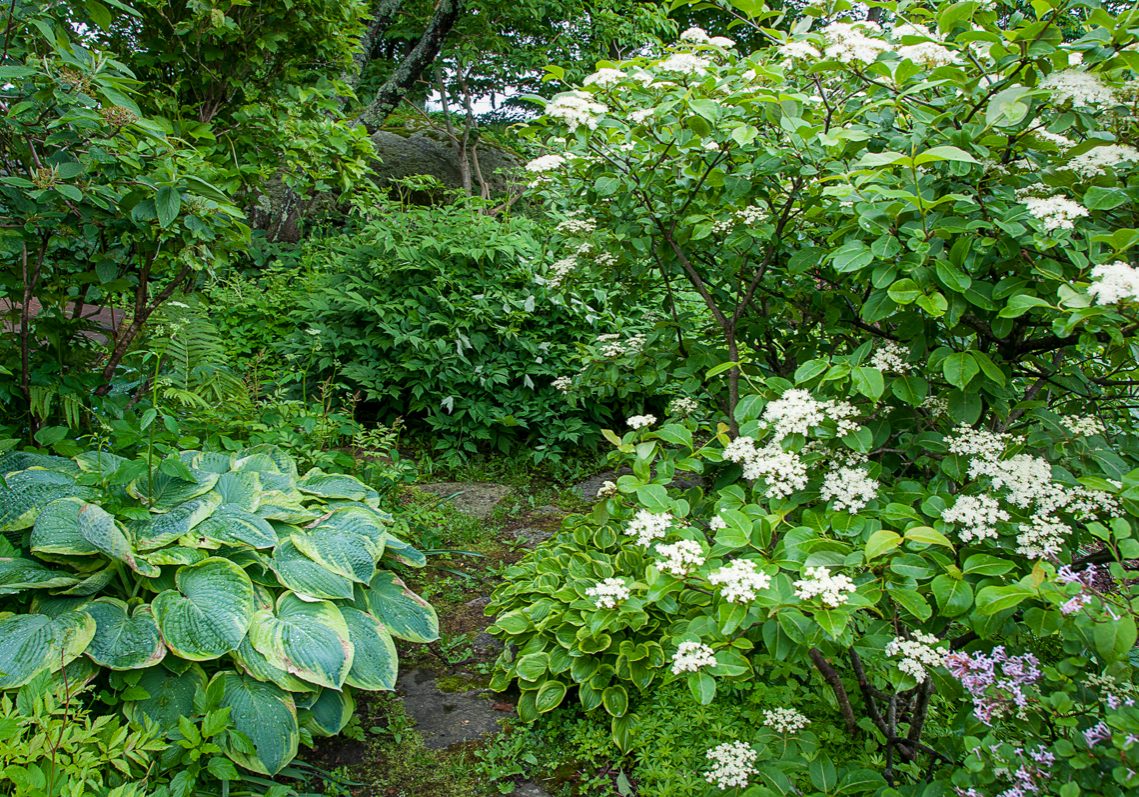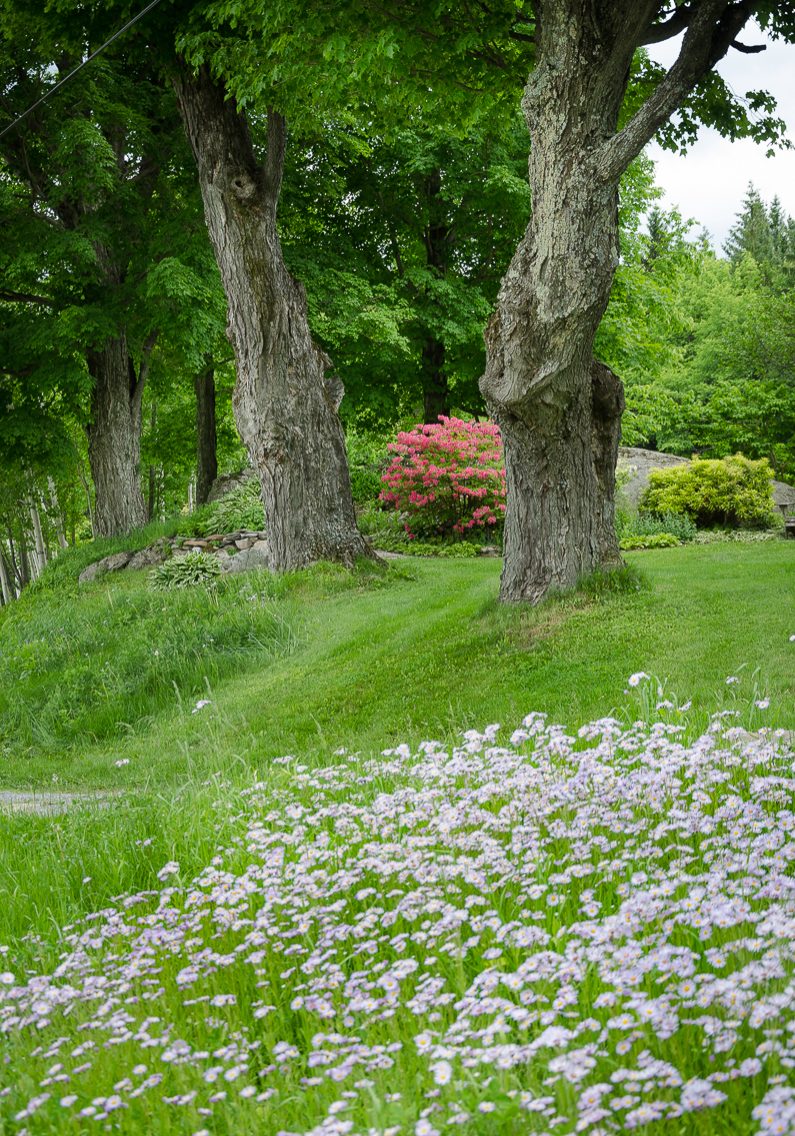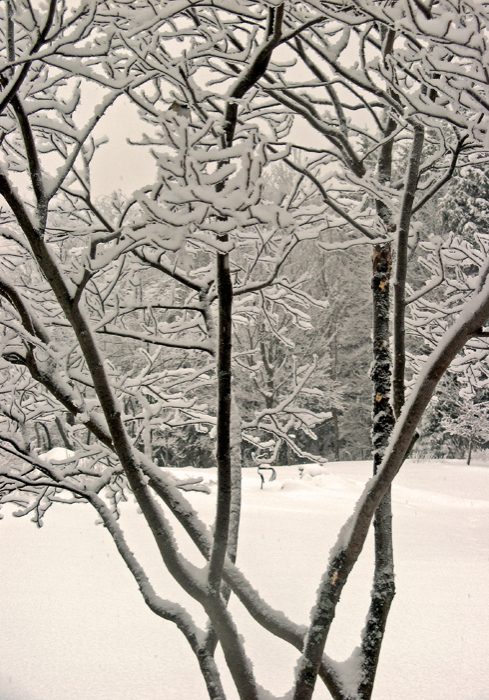Creating a Garden
A beautiful garden is a joy to behold as it evokes countless feelings that touch each of us individually. A well-designed garden becomes a part of your life and your home, reflecting both your dreams and your needs, while drawing its inspiration from the land.
It is also sustainable and enduring, beautiful in every season, and a careful balance of form and function.
Moreover, a garden is not a monolithic entity, but rather made up of interconnected spaces, each with its own purpose and ambiance, such as:
Welcome
The front garden says welcome to you and your guests and, potentially, becomes a gift to the whole neighborhood. The walkway, perhaps edged with flowers, beckons you to the main door. On either side, shrubs and small trees under-planted with spring bulbs and summer perennials, echo the shape of the house.
Haven
Behind the house and hidden from the public eye, a quiet and tranquil garden becomes a private sanctuary where you can nurture delightful plants and connect with the natural world.
Harvest
Growing some of your own fruits and vegetables, as well as cut flowers, is wonderfully productive way to use some of your land. You feel a special pride of ownership as the garden's harvest finds its way indoors, as decorations for the table and edibles for the kitchen. It is nice to ensure that the kitchen garden is as beautiful as it is fruitful and its positioning is integrated into the larger spatial plan.
Home
And last, but not least, a garden becomes an extension of your home. In the summertime a pleasantly shaded deck or patio is the perfect place to spend precious time with family and friends. And, whatever the season, when seen from a favorite room a beautiful garden becomes a picture and the window its picture frame.
As the design for a new garden unfolds we want to ensure that all these different spaces meet your needs and aspirations, enrich your life, while also creating a harmonious whole.
Large or Small?
A garden need not be large for it to be totally satisfying and lovely.The old saying 'small is beautiful’ is particularly apt when applied to gardens for busy people and those with limited mobility. For many of us a well-designed but diminutive garden that is easy to maintain will be inherently more satisfying than a large space that might become burdensome. And, for people with a smaller in-town property, a beautiful bijou garden offers an undiluted delight.
On the other hand some people have an expansive piece of land and time to commit to creating a large garden, and delight in an extensive flowing design involving multiple garden spaces populated by plants of all types.
The scale of your garden should not be dictated by fashion or fad, but should be a reflection of your lifestyle and of your land.
Beauty and Function — a Balance
A fine garden is a subtle blend of what satisfies and what works. Its beauty pleases our senses, as its design meets our needs.
While it is always pleasing to conjure up images of beautiful gardens, our outdoor spaces must also be designed with function in mind. For instance:
In a good spatial design the flower beds are deep enough to layer your plants, paths are wide enough for easy walking, decks and patios are sized for relaxed living, and the lawn is shaped for trouble-free mowing.
A complete spatial design ensures that all necessary spaces, like the woodshed and compost bin, are easily accessible without an intervening obstacle course of pots and plants. At the same time it integrates the individual components of a landscape, such as paths, patios, planted areas and lawns, into a smooth and graceful whole.
A careful vertical design takes into consideration how the shade cast by trees and buildings alters, both from season to season as the sun’s arc rises and falls in the sky, and from year to year as the trees mature and expand.
Good design balances the aesthetic with the practical, without compromising either.
A Garden For All Seasons
In New England our gardens mirror the magic of our ever-changing seasons. Step outdoors and greet the ephemeral flowers of spring. Relax in the gazebo over a leisurely al fresco dinner at the high point of summer, while enjoying the fragrance of summer-flowering azaleas and summersweet. Savor the beauty of autumn, from red and yellow shrubs to a late season display of hardy chrysanthemums and purple asters.
Winter has a simple beauty all its own, most often enjoyed from warmth of the house, with stark shapes, shadows and silhouettes, set off against a fresh fall of snow. The right choice of plants – trees, shrubs and even some perennials—add visual charm of the hibernating garden. Even though the plants are sleeping, a well-designed garden can still be lovely.
The Sustainable Garden
In creating a sustainable garden we embrace a longer and a wider point of view than the immediate present. What will the garden be like in ten or even twenty years time? How does the garden impact the larger environment and how can it contribute to my community?
The sustainable garden is a place of beauty and tranquility where we can enjoy the natural world. In creating sustainable gardens we emphasize stewardship of the land and welcoming wildlife, while we strive to minimize our use of non-renewable resources. A sustainable garden will also contribute to the neighborhood and community, and make a positive impact on the wider environment.
Many practical design considerations contribute to the creation of a sustainable garden, including:
Develop a master plan even though you may not implement everything for several years. This helps guard against nasty surprises in the future. Imagine the effort involved to move a planting bed, or worse a stone path, over by ten feet to accommodate a new patio. A master plan shows how the main garden elements relate to one another and avoid this type of problem.
Pick and position varieties of trees and shrubs considering how they will look in the landscape, both early on and after ten or twenty years. Even the outset, young shrubs and trees define the framework of the garden, and we can use colorful flowers to fill the intervening spaces. As the woody plants grow and thrive, they cast ever-widening circles of shade to reach out to touch one another. Even at maturity they should not be so close that they crowd together, nor require an annual pruning to keep them from engulfing their neighbors.
Select varieties of plants that will thrive in the conditions at hand, whether sunny or shady, dry or wet, as well as those that will thrive through even in the coldest winters.
Favor native plants. A good mix of native plants supports the wildlife food-chain, creating a hospitable environment for pollinators, butterflies and birds.
Avoid invasive plants that can damage the wider environment.
Strive to create the optimal growing environment for the plants. This may include up-front work such as the proper handling of slopes or correcting poor drainage. Most of all, however, it involves incorporating plenty of organic matter, both at the outset and as part of one’s ongoing gardening practices, to nurture and improve the soil. Good soil means plants will grow better, with fewer diseases and other problems, which in turn obviates the need for inorganic fertilizers and pesticides. And large healthy plants also shade the soil, which will go a long way towards discouraging weeds, also a most desirable situation!
Use design choices and gardening practices that eliminate or minimize the need for watering. These include: select plants that thrive in drier environments; limit the overall amount of lawn by replacing it naturalized meadow or woodland spaces; use a mulching mower set to cut high; mulch all exposed soil with a natural material (such as bark mulch or composted leaves) which will maintain soil moisture and gradually decompose to enrich the soil.
